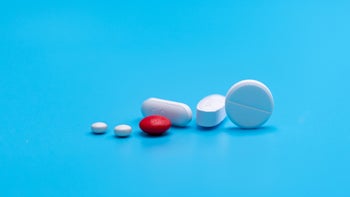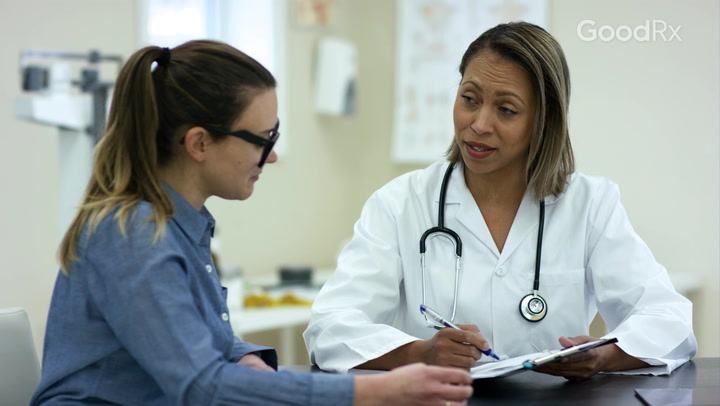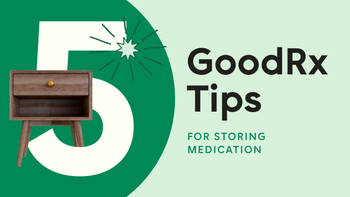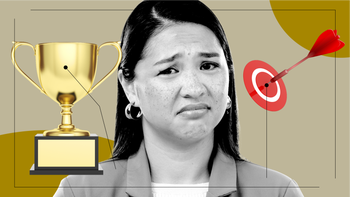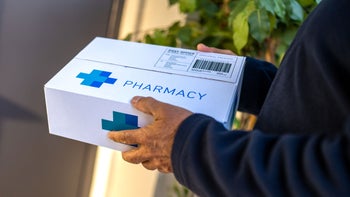
What Are the Different Types of Pills?
Key takeaways:
There are many types of pills. It’s important to know the differences between them when it comes to deciding the best medication option for you.
Dissolving, buccal, and sublingual tablets are good options when medications need to work quickly or you’re having trouble swallowing pills.
Talk to your healthcare provider or pharmacist about the different types of pills available. Let them know about any medication preferences you may have.
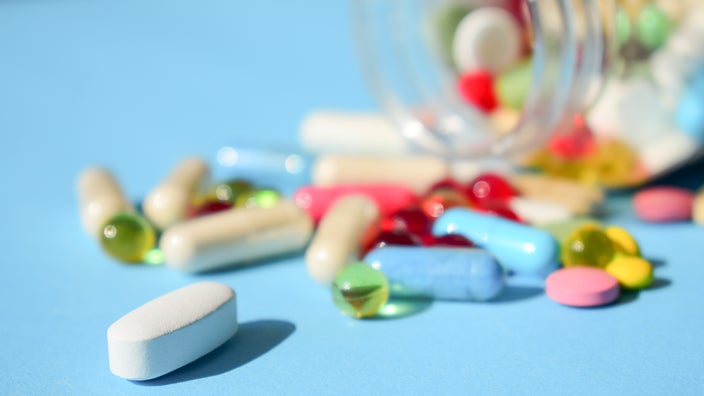
Oral medications come in many forms: there are capsules, tablets, softgels, and more.
With so many different types of pills, it’s important to know how each works in the body. Still, all of these options have the same goal: to safely get the medication to the right place in the body.
In this article, we’ll break down the differences between the main types of pills.
Search and compare options
How do pills work?
Once you swallow a pill, it makes its way into your stomach and intestines. It’s then broken down by your digestive tract and enters your bloodstream. This is where most medications do their work.
Medications that you swallow are subject to a concept called the “first pass effect”. The first pass effect is when the body metabolizes (breaks down) a medication before it starts working. This usually happens in the liver, but it can happen in other areas of the body, too. This process lowers a medication’s original concentration. So only some of the medication in a pill circulates through the bloodstream or the area of the body it’s intended to affect.
The first pass effect is important when it comes to choosing a type of pill. Medications still need to work once they’re metabolized. So, if the first pass effect would lower a medication’s concentration too much, another dosage form may be needed.
Some medications avoid the first pass effect because they enter the bloodstream directly. These include injectable medications and some topical products (those applied to the skin). Pills that dissolve in the mouth, such as sublingual tablets, also avoid the first pass effect.
This information can help you and your healthcare provider pick the best type of pill and medication dose for you.
What are 10 common types of pills?
Below, we discuss 10 different types of pills. Many prescription and over-the-counter (OTC) medications are available in the following forms.
1. Capsules
A capsule is an oral medication that’s usually swallowed. The medication is surrounded by an outer shell, often made of gelatin. Capsules come with hard or soft shells. A capsule usually contains powder, miniature pellets, or liquid inside.
Capsules are easy to swallow compared to tablets and don't usually have an aftertaste. They can also work faster than tablets in many cases. However, capsules tend to have a shorter shelf life than tablets.
Capsules generally can’t be chewed, crushed, or cut. And even though some capsules can be opened, many of them can’t be. Opening or breaking the outer shell can sometimes release the medication all at once or too early. This could cause harmful effects or make the medication less effective. It’s important to ask your pharmacist if your capsule can be opened or not.
Common capsule examples: the heartburn medication omeprazole (Prilosec) and antidepressant fluoxetine (Prozac).
2. Softgels
A softgel is a specific type of capsule. The word softgel is short for “soft gelatin.” So, this type of pill usually has a soft gelatin shell.
Compared to hard-shelled capsules, softgels can help deliver more medication to the bloodstream. But their shelf life is often shorter than other capsules. And it’s generally not advised to open, chew, or crush softgels.
Common softgel examples: fish oil capsules (Lovaza) and the stool softener docusate (Colace).
3. Sprinkle capsules
Sprinkle capsules contain miniature pellets or granules inside an outer shell. They’re designed to be opened, but can be swallowed whole if desired. Sprinkle capsules are one option for people who have trouble swallowing pills.
The medication inside this type of pill can be sprinkled on soft food, like yogurt or applesauce, or in beverages. However, the best food or drink choice to use with your treatment often depends on the medication you’re using. You also shouldn’t chew the food-medication mixture.
Once sprinkled on food or in beverages, the mixture should be consumed right away. You shouldn’t store it for later use.
Common sprinkle capsule examples: the seizure medications topiramate (Topamax Sprinkle) and divalproex (Depakote Sprinkle).
4. Traditional tablets
A traditional tablet is a pill that’s composed entirely of medication and usually has no outer shell. A medication in powder form and other inactive ingredients are compressed into a solid, smooth pill. This dose form is what you likely think of when you hear the word “pill.”
Unlike capsules, tablets can often be cut in half. But always check the instructions or ask your pharmacist before doing so.
Tablets can contain higher medication doses than capsules and usually have a longer shelf life. But they may have an unpleasant aftertaste and might be absorbed slower into the body. Be sure to check out our previous article about capsules versus tablets for more information about how these two types of pills compare.
Common tablet examples: the cholesterol medication atorvastatin (Lipitor) and pain reliever acetaminophen (Tylenol).
5. Chewable tablets
Chewable tablets are tablets that should be chewed first and then swallowed. The advantage of chewable tablets is that they’re easy to swallow and often taste good. This makes them an ideal option for kids.
Common chewable tablet examples: the seizure medication carbamazepine (Tegretol) and asthma medication montelukast (Singulair).
6. Oral disintegrating tablets
Oral disintegrating tablets (ODTs) are tablets that dissolve on the top of the tongue. They shouldn’t be swallowed or chewed. This type of pill comes in handy when medications can’t be easily swallowed or you’re having trouble keeping things down.
A drawback to ODTs can be the taste. This type of pill should also be stored in its original packaging. This is because moisture in the air can cause them to start dissolving.
Common ODT examples: the anti-nausea medication ondansetron (Zofran ODT) and migraine medication rimegepant (Nurtec ODT).
7. Sublingual tablets
Sublingual tablets are pills that are placed under your tongue and broken down by your saliva. The medication is then absorbed through the tissue under your tongue.
The area under the tongue has many small blood vessels. The medication in sublingual tablets enters the bloodstream through these blood vessels. This type of pill avoids the first pass effect and can start working very fast.
Sublingual tablets can be a good option when you need medication to start working quickly. But the taste may not be preferred by some people. And like ODTs, moisture can cause them to start dissolving.
Common sublingual tablet examples: the chest pain medication nitroglycerin (Nitrostat) and opioid use disorder medication buprenorphine.
8. Effervescent tablets
Effervescent tablets break down when they’re placed in a liquid, like water or juice. The tablet completely dissolves, and then you drink the liquid. They’re generally absorbed into the body quicker than traditional tablets.
Effervescent tablets might be another good option for people who have trouble swallowing pills. They’re convenient because they don’t need to be measured out like oral liquid solutions.
Common effervescent tablet examples: the indigestion medication Alka-Seltzer and immunity support products, like Airborne.
9. Buccal tablets
Buccal tablets work by placing the pill between your gums and the inside of your cheek. The medication will dissolve there and enter your bloodstream.
Buccal tablets are like sublingual tablets, except the placement in your mouth is different. The cheek area also has many small blood vessels. This helps medication absorb into the bloodstream without entering the digestive tract. Buccal tablets avoid the first pass effect and start working faster than traditional tablets.
Buccal tablets can be a good option when you need medication to kick in quickly. But the placement of the tablet in the mouth can be uncomfortable for some people.
Buccal tablet examples: the cancer pain medication fentanyl (Fentora) and cold sore medication acyclovir (Sitavig).
10. Caplets
Caplets are smooth-coated tablets that are shaped like capsules. Caplets are an easier-to-swallow alternative to traditional tablets. But they’re absorbed in the body similarly to tablets.
Common caplet examples: the pain reliever naproxen (Aleve) and diarrhea medication bismuth subsalicylate (Pepto-Bismol).
Bioavailability and pill type
The first pass effect contributes to the oral bioavailability of pills. Bioavailability is the amount (concentration) of medication that makes it into your bloodstream or where it’s designed to start working.
Medications that undergo the first pass effect usually have a lower bioavailability than those that don’t. For instance, sublingual tablets tend to have a higher bioavailability than traditional tablets.
Knowing a pill’s oral bioavailability can help your healthcare provider decide what type of pill would be right for you.
The bottom line
There are many forms of medications available. Different types of pills offer different benefits. Ease of use, shelf life, and oral bioavailability can be factors in choosing the best option for you.
Talk to your healthcare provider or pharmacist if you’re curious about the different types of pills. Always let your healthcare provider know about medication preferences you have. They can help you pick the best option for you.
Why trust our experts?



References
Ajanta Pharma USA Inc. (2022). Divalproex sodium [package insert].
DailyMed. (2021). Alka-Seltzer.
DailyMed. (2021). Pepto-Bismol.
Farméa. (2019). Sitavig [package insert].
Food and Drug Administration. (2018). Quality attribute considerations for chewable tablets guidance for industry.
Gaikwad, S. S., et al. (2020). Review on tablet in tablet techniques. Beni-Suef University Journal of Basic and Applied Sciences.
Gullapalli, R. P. (2010). Soft gelatin capsules (softgels). Journal of Pharmaceutical Sciences.
Hannan, P. A., et al. (2016). Oral dispersible system: A new approach in drug delivery system. Indian Journal of Pharmaceutical Sciences.
Herman, T. F., et al. (2021). First pass effect. StatPearls.
Janssen Pharmaceuticals, Inc. (2022). Topamax [package insert].
Lee, H. S., et al. (2020). Sprinkle formulations — A review of commercially available products. Asian Journal of Pharmaceutical Sciences.
Novartis Pharmaceuticals Corporation. (2022). Tegretol [package insert].
Price, G., et al. (2021). Drug bioavailability. StatPearls.
ScienceDirect. (n.d.). Buccal drug administration.
ScienceDirect. (n.d.). Capsule.
ScienceDirect. (n.d.). Effervescent tablet.
ScienceDirect. (n.d.). Orally disintegrating tablet.
ScienceDirect. (n.d.). Sublingual route.
Was this page helpful?
Related Articles
Browse medications
View AllResearch prescriptions and over-the-counter medications from A to Z, compare drug prices, and start saving.





















